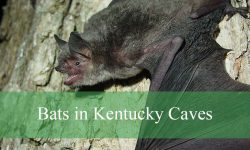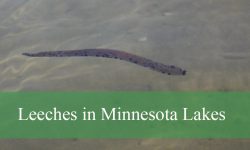Florida is a state rich in wildlife diversity, from colorful birds and reptiles to unique mammals. Among these creatures, armadillos stand out due to their unusual appearance and fascinating behaviors. Known for their protective armored shells and digging abilities, armadillos have captured the curiosity of naturalists, photographers, and casual wildlife observers alike.
Though not originally native to Florida, the nine-banded armadillo has successfully expanded its range across the state. They can be found in forests, grasslands, and even some suburban areas, adapting remarkably well to different environments. Observing these creatures provides a window into the hidden world of Florida’s nocturnal and shy mammals, offering both educational and recreational opportunities.
This article explores everything you need to know about armadillos in Florida, including their characteristics, behavior, habitat, and the best places to see them in the wild.
Physical Characteristics of Armadillos

Armadillos are small to medium-sized mammals that are instantly recognizable due to their hard, armor-like shells. The nine-banded armadillo, which is the species most commonly found in Florida, has a series of flexible bony bands running across its back. These bands not only provide protection from predators but also give the animal surprising flexibility, allowing it to curl slightly and squeeze through narrow spaces. The armor is made up of osteoderms, which are bony deposits in the skin that create a tough, protective layer. This shell is not solid; instead, it is segmented to allow movement and agility, making the armadillo both resilient and nimble.
An adult nine-banded armadillo typically measures between 15 and 17 inches in body length, with the tail adding an additional 14 to 16 inches. Their weight generally ranges from 8 to 17 pounds, though some individuals can grow slightly larger in regions with abundant food. Their elongated snouts are highly sensitive and house hundreds of tiny tactile receptors, allowing the armadillo to detect insects beneath the soil with precision. Small, dark eyes provide limited vision, but their acute sense of smell compensates, making them excellent foragers.
Their forelimbs are equipped with short but strong claws, perfectly designed for digging. Armadillos use these claws to excavate burrows for shelter, unearth insects, and even dig out hiding spots in dense vegetation. The coloration of armadillos ranges from grayish-brown to reddish-brown, blending almost seamlessly into Florida’s forest floors, grasslands, and scrublands. This natural camouflage, combined with their nocturnal lifestyle, often makes spotting them a challenge, adding an element of excitement for wildlife observers and photographers alike.
Interestingly, armadillos have very delicate internal anatomy beneath their robust shells. Their light bones and low body fat allow them to move with surprising agility, while the shell offers protection from most small predators. Despite their armored exterior, they remain vulnerable to larger animals and human-related threats, such as cars and habitat encroachment.
Behavior and Diet
Armadillos are primarily nocturnal animals, becoming most active at dusk and continuing through the night. During the day, they retreat to burrows, under logs, or thick vegetation to escape the heat and predators. Their nocturnal habits make them more elusive to casual observers, though nighttime wildlife enthusiasts often encounter them along forest edges or in open grasslands.
These mammals are solitary by nature, interacting mainly during mating season or when resources are particularly plentiful. They are not territorial in a strict sense, but they maintain a network of burrows and foraging routes within their home range, often revisiting the same spots repeatedly.
The diet of armadillos consists primarily of insects and other invertebrates. Ants, termites, beetle larvae, and grubs make up the bulk of their nutrition. Occasionally, they will consume small fruits, fungi, or plant matter, but their digestive system is specially adapted to a protein-rich insect diet. Their digging habits, while sometimes inconvenient for gardeners, play an important ecological role by aerating the soil and reducing insect populations that might otherwise damage vegetation.
One remarkable feature of armadillos is their swimming ability. They are capable of holding their breath for up to six minutes and can walk along the bottom of streams or small bodies of water to find food or escape predators. Additionally, they can slightly inflate their intestines to float across water surfaces, a rare adaptation among terrestrial mammals. These skills allow armadillos to navigate the diverse environments of Florida, from swampy wetlands to drier forests and open fields.
Habitat and Distribution in Florida
Armadillos are highly adaptable and inhabit a wide range of environments across Florida. They prefer areas with loose, sandy soil that is easy to dig, dense vegetation for cover, and sufficient food resources. Forests, scrublands, grasslands, and even rural suburban areas can all serve as suitable habitats. Their presence is less common in heavily urbanized areas, paved landscapes, or wetlands that are too waterlogged to allow for burrowing.
Protected areas such as Everglades National Park, Ocala National Forest, and Big Cypress National Preserve are ideal for armadillos. In these regions, they are more visible due to the abundance of insects, safe burrowing locations, and minimal human disturbance. Even in rural farmland, they can often be spotted along fence lines, hedgerows, or uncultivated land where soil is soft enough for digging.
Their geographic distribution covers most of Florida, with higher concentrations in central and southern parts of the state. Climate plays a significant role; armadillos prefer warm, humid conditions and are sensitive to colder temperatures. As a result, their activity patterns and local population densities can vary seasonally, with higher visibility during the warmer months.
Reproduction and Lifespan
Armadillo reproduction is unique among mammals. Females usually give birth to four genetically identical young, known as quadruplets, after a gestation period of approximately four months. This remarkable reproductive trait ensures a consistent litter size and is relatively rare among mammals. Births typically occur in the spring or early summer, giving the young ample time to develop before facing cooler weather or seasonal environmental challenges.
Newborn armadillos are soft-shelled and tiny, but their shells harden as they grow within the first few weeks of life. Sexual maturity is reached at roughly one year, after which they can reproduce annually. In the wild, armadillos can live up to 15 years, though many face natural threats such as predation by coyotes, bobcats, and large birds of prey. Vehicle collisions pose an additional risk due to their nighttime foraging habits, making roads particularly dangerous for these nocturnal travelers.
Armadillos are highly resilient and capable of adapting to a variety of conditions, but human encroachment and environmental changes continue to influence their survival and distribution in Florida.
Fun Facts About Armadillos
Armadillos possess several intriguing traits that make them stand out. When startled, they can leap vertically up to three feet in the air, a defensive tactic designed to evade predators. While effective in the wild, this jumping behavior often puts them at risk on roads.
Their sense of smell is incredibly acute, compensating for their limited eyesight. They can detect prey beneath several inches of soil, which is vital for their insectivorous diet. Digging burrows serves multiple purposes: providing shelter, protecting young, and even supporting other wildlife, as abandoned burrows may become homes for rabbits, snakes, or small mammals.
Despite their armor, armadillos maintain a low body temperature, making them vulnerable to cold weather. In northern climates, their activity slows significantly during winter months, but Florida’s warm environment allows year-round activity. Their digging also contributes to soil health, improving aeration and promoting nutrient cycling, which benefits the ecosystems they inhabit.
Best Times and Places to Observe Armadillos
For wildlife enthusiasts seeking to observe armadillos in Florida, timing and location are crucial. These animals are primarily nocturnal, so early evening and nighttime are the most productive periods for spotting them. During these hours, armadillos leave their burrows to forage for insects, grubs, and other invertebrates. Morning sightings are rarer, usually occurring just before sunrise when the animals are returning to their burrows after a night of activity.
Several locations in Florida provide excellent opportunities for armadillo observation. Everglades National Park, with its vast marshes, hardwood hammocks, and open prairies, is a prime habitat where visitors may catch glimpses of these shy mammals. Ocala National Forest offers another excellent location, with a mix of pine flatwoods, sandhills, and swamps that support robust armadillo populations. Big Cypress National Preserve, with its wetland habitats and dense vegetation, is also ideal, particularly for nocturnal excursions.
In addition to protected areas, armadillos can occasionally be seen in rural or semi-rural areas where soil is soft and natural cover is abundant. Dirt roads, forest edges, and lightly vegetated fields often reveal the telltale signs of armadillo activity—small, cone-shaped holes dug in search of insects. Observers are encouraged to use binoculars or night-vision equipment for safer and more effective viewing, maintaining a respectful distance to avoid disturbing these elusive mammals.
Armadillos and Human Interaction
While armadillos are fascinating to observe, interactions with humans should be approached with caution. These mammals are generally non-aggressive but may carry rare diseases such as leprosy. Direct contact is strongly discouraged, and anyone handling armadillos should exercise extreme care.
Armadillos can occasionally cause problems for gardeners and property owners due to their digging habits. Burrows may disrupt lawns, flower beds, or garden landscapes. However, simple measures such as fencing, barriers, or habitat modification can help minimize damage without harming the animals. Understanding armadillo behavior and activity patterns can also prevent conflicts. For example, avoiding nighttime activity in areas known for heavy armadillo presence reduces accidental encounters.
Despite minor nuisances, armadillos provide ecological benefits that outweigh potential drawbacks. Their digging aerates soil, promotes nutrient cycling, and helps control insect populations that could otherwise affect crops or native plants. Observing their behavior also provides educational opportunities for children and adults, fostering an appreciation for Florida’s natural wildlife and the delicate balance of its ecosystems.
Conservation Status
Currently, armadillos are not considered endangered in Florida. Their adaptability, combined with the absence of significant natural predators in many areas, has allowed populations to expand steadily over the past decades. Conservation efforts focus mainly on public education, highlighting the importance of safe coexistence and habitat preservation.
Maintaining armadillo-friendly habitats is key to their continued success. Protected areas, national forests, and preserves play a critical role in offering safe foraging grounds and undisturbed burrowing locations. Reducing vehicle collisions, controlling urban expansion into natural areas, and educating the public about responsible wildlife observation are essential measures.
While armadillos are currently stable in Florida, monitoring is important to ensure that changes in climate, urbanization, or disease do not negatively impact local populations. By fostering awareness and respecting the natural behaviors of these unique mammals, humans can contribute to the preservation of Florida’s biodiversity.
Conclusion
Armadillos are among Florida’s most intriguing and unique mammals, combining unusual physical characteristics, fascinating behaviors, and significant ecological roles. Their armored shells, nocturnal habits, and remarkable digging skills make them a subject of interest for wildlife enthusiasts, photographers, and casual observers alike.
By understanding their habits, diet, reproduction, and preferred habitats, humans can safely and responsibly observe armadillos in the wild. Protected areas such as Everglades National Park, Ocala National Forest, and Big Cypress National Preserve offer the best opportunities to see these creatures in their natural environments, while rural landscapes also provide occasional sightings.
Armadillos enrich Florida’s ecosystems through their insect control and soil aeration activities. Appreciating these small but remarkable mammals helps foster a deeper connection to the natural world. Observing armadillos in Florida is not only an adventure but also an educational experience that highlights the importance of preserving wildlife and respecting their habitats.
FAQs About Armadillos in Florida
What Species of Armadillos Are Found in Florida?
The most common species in Florida is the nine-banded armadillo. This species is recognizable by the nine flexible bands on its back and is well-adapted to Florida’s warm, humid climate. Other armadillo species are rare and not typically found in the wild within the state.
Are Armadillos Dangerous to Humans or Pets?
Armadillos are generally not aggressive. They do not attack humans or pets. However, they can carry rare diseases such as leprosy, so direct contact is not recommended. Maintaining a safe distance and avoiding handling them is the safest approach.
When Is the Best Time to See Armadillos in Florida?
Armadillos are primarily nocturnal, so early evening and nighttime are the best times to observe them. Occasionally, they can be spotted just before sunrise as they return to their burrows after nighttime foraging.
Where Are the Best Places to Observe Armadillos?
Protected areas and national forests offer the best opportunities for armadillo sightings. Top locations include Everglades National Park, Ocala National Forest, and Big Cypress National Preserve. Rural areas with soft soil and natural vegetation also provide occasional sightings.
What Do Armadillos Eat?
Armadillos are mainly insectivores, feeding on ants, termites, beetles, and grubs. They may also eat small fruits or plants, but invertebrates form the bulk of their diet. Their foraging helps control insect populations in the ecosystem.
How Do Armadillos Affect Gardens and Lawns?
Due to their digging behavior, armadillos can create small holes in lawns and gardens while searching for insects. This can be disruptive, but their activity also aerates the soil and contributes to a healthy ecosystem. Fencing or habitat modification can minimize garden damage.
How Do Armadillos Reproduce?
Female armadillos typically give birth to four identical offspring, called quadruplets, after a gestation period of about four months. Births usually occur in spring or early summer, allowing young armadillos to grow in favorable conditions before cooler months.
How Long Do Armadillos Live in the Wild?
In the wild, armadillos can live up to 15 years, although many face threats from predators such as coyotes, bobcats, and birds of prey, as well as vehicle collisions. Their longevity is influenced by habitat, food availability, and environmental conditions.
Can Armadillos Swim?
Yes, armadillos are excellent swimmers. They can hold their breath for up to six minutes, walk along the bottom of streams, or slightly inflate their intestines to float across water. This ability allows them to navigate Florida’s swamps, wetlands, and rivers efficiently.
Are Armadillos Protected in Florida?
Armadillos are not considered endangered in Florida, and their populations are stable. Conservation efforts focus on public education, safe coexistence, and habitat preservation rather than strict legal protection.






